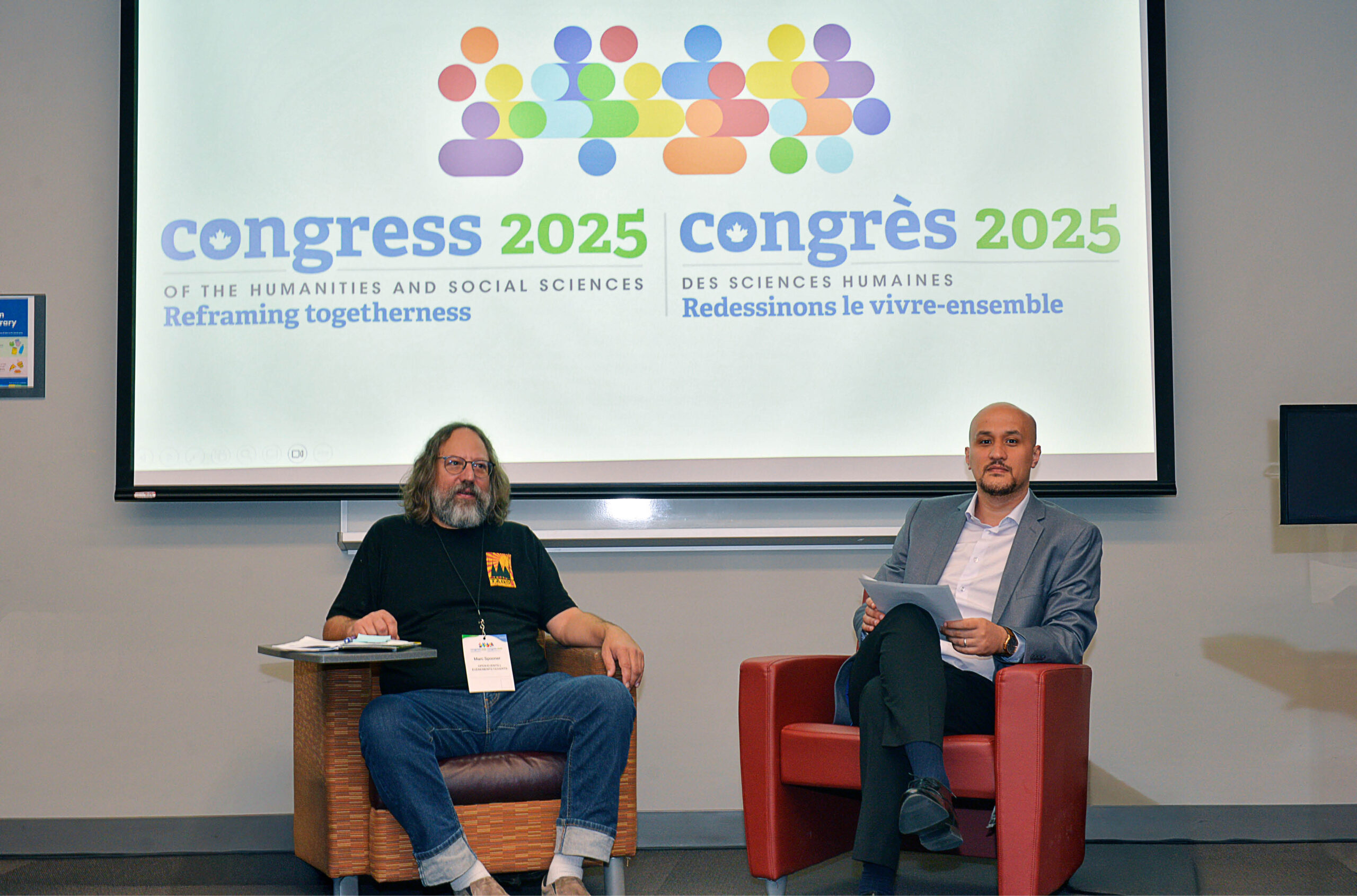How do we build an intentional university?
Is it best to start from scratch, or to retrofit an existing institution?

“You’ve been to a Silicon Valley startup before, haven’t you?” Not an opening question I would normally expect from the equivalent of a provost who’s about to show me around campus – or rather, head office. The Minerva Schools at KGI doesn’t actually have a campus per se. The ninth-floor, open-concept premises I was fortunate enough to visit in San Francisco recently is more like mission control for a bold, global and partly virtual educational venture.
A young, dynamic, tech entrepreneur named Ben Nelson – former CEO of Snapfish, not to be confused with Snapchat – founded Minerva in 2012, with its inaugural class in 2014. He calls it an “intentional university” designed “to provide an extraordinary liberal arts and sciences education to the top students in the world” – primarily at the undergraduate level, though there are a couple of graduate programs at the master’s level. Its novel design – a product of the tech startup environment in which it was founded – attempts to address the woes facing most 21st-century postsecondary institutions.
Those challenges were compellingly described in Ottawa in 2011 at a public lecture by Sam Pitroda, the larger-than-life, Indian-born and now U.S.-based tech entrepreneur who chaired India’s Knowledge Commission. He argues that the concept of the university was designed 400 years ago and that there has been little effort exerted to have it evolve since then. Of course, this may be a little harsh as there are plenty of new universities, and even old universities have evolved over the years.
I had the unexpected treat of being introduced to Mr. Nelson before partaking in a weekly lunch for staff with my host, Stephen Kosslyn, chief academic officer of Minerva and former director of the Center for Advanced Study in the Behavioral Sciences at Stanford University and, prior to that, dean of social science at Harvard. I had corresponded occasionally with Dr. Kosslyn since his Harvard days, but this was our first opportunity to meet in person. I was pleased to learn that both he and Mr. Nelson had heard of one of Canada’s newest intentional universities – also focused on educating a select group of students in a unique way from around the world in undergraduate liberal arts and science – Quest University in Squamish, B.C., close to my neck of the woods.
That’s where the comparison ends, however. Minerva does not have classrooms, nor lectures. Neither is it a fully online or distance education-type institution, though a unique virtual course delivery model using what it calls a “novel technology platform” is a distinguishing feature of its pedagogical approach. Classes can be taken wherever there’s sufficient Wi-Fi. As described a few years ago in the San Francisco Chronicle:
It’s class time at Minerva, and you’d better be prepared to participate. Professors are prohibited from droning on for more than five minutes and have a timer to stop them if they become too enamored of their own voice. As for you, don’t expect to hide in the crowd. There is none. Classes are limited to 19 students, all are visible onscreen, and all classes are recorded. Students are evaluated not only on how actively they join in, but also on how effectively they think. There are no exams.
What makes Minerva stand out is not only the high standards of admission – which result in the small institution being harder to get into than Harvard – but the fact that students from around the world live, interact and travel with each other while rotating through seven cities around the world. In these distinct urban environments, they learn from their professors, each other and through experiential learning. In that sense, it reminds me a bit of a postsecondary version of the United World Colleges born after World War Two. One of these institutions, Pearson College, is also located on Canada’s West Coast, on the outskirts of Victoria.
Once they have finished their program, Minerva graduates have had on-the-ground, hands-on learning experiences in San Francisco, Buenos Aires, London, Berlin, Hyderabad, Seoul and Taipei. The goal of Minerva might therefore be thought of as creating global citizens equipped with the knowledge and founding experiences needed for the 21st century.
Dr. Kosslyn’s expertise as a psychologist and neuroscientist has been instrumental in designing a curriculum and approach to learning that attempts to meet these objectives, as described in his tome edited with Ben Nelson, Building the Intentional University, published in 2017 by MIT Press. He kindly offered me a copy as a gift before returning to his simple desk in his open office, identical to all the others on the floor.
My visit to Minerva’s head office prompted me to reflect on a number of key questions facing Canadian postsecondary education. How important are bricks and mortar to the concept of a university? After all, capital campaigns to fix both crumbling infrastructure and fund new buildings are a distinguishing feature of every university president’s job. Is the Minerva model replicable and scalable or is it a unique boutique institution and natural extension of its Silicon Valley birthplace?
As a comparison, the alternative university planned by the former dean of the graduate school at MIT, Christine Ortiz, has similar ambitions to be a university of the future without classrooms but is following quite a different pace and trajectory, based on the most recent coverage in The Chronicle of Higher Education. Last, but certainly not least, if the Minerva model could be reproduced in some way and delivered at scale in a Canadian context, how would that mesh with the public funding received by the vast majority of Canadian universities, with new institutions like Quest being a notable exception?
While Canadians would refer to the Minerva Schools at KGI as a “private” university, it’s actually a not-for-profit, like Quest. Dr. Kosslyn explained that most students receive financial aid and, even with that, it’s far from a money-making proposition at this time.
In Canada, as far as publicly funded, intentional universities are concerned, we have the example of Royal Roads University, another West Coast case. The university reinvented itself from a former military college into a professionally oriented institution without traditional disciplines that combines face-to-face and online learning.
There is also the compelling case of the University of Northern British Columbia, opened in 1994 in Prince George with campuses in other remote communities in response to a grassroots movement – including a plebiscite involving 16,000 signatures, whose signatories all paid $5 each – to establish a university in the north, for the north.
This raises the question: is it better to build an intentional university from scratch or to retrofit an existing institution? One can suppose that, when they are created, all universities are intentional. But, the older they become, the more the environment changes, requiring either minor or major adjustments to the vision, mission and programming along the way. George Iwama, president of Quest University and former president of UNBC, remarked in a conversation when being consulted on this article that “most universities have forgotten that they were intentional.”
While the answer to whether to build from scratch or to retrofit is unclear, there’s obviously an interesting breeze blowing in from the Pacific with respect to universities of the future. Only time will tell if these experiments in postsecondary education will be beacons of a sea change in the slow-moving tide pushing our academic institutions to evolve.
Gisèle Yasmeen is a senior fellow at the University of British Columbia, an adjunct professor at Royal Roads University, and former vice-president, research and partnerships, at the Social Sciences and Humanities Research Council of Canada.
Featured Jobs
- Veterinary Medicine - Faculty Position (Large Animal Internal Medicine) University of Saskatchewan
- Psychology - Assistant Professor (Speech-Language Pathology)University of Victoria
- Canada Excellence Research Chair in Computational Social Science, AI, and Democracy (Associate or Full Professor)McGill University
- Business – Lecturer or Assistant Professor, 2-year term (Strategic Management) McMaster University
- Canada Excellence Research Chair in Forest Biodiversity Conservation (Full Professor)University of New Brunswick













Post a comment
University Affairs moderates all comments according to the following guidelines. If approved, comments generally appear within one business day. We may republish particularly insightful remarks in our print edition or elsewhere.